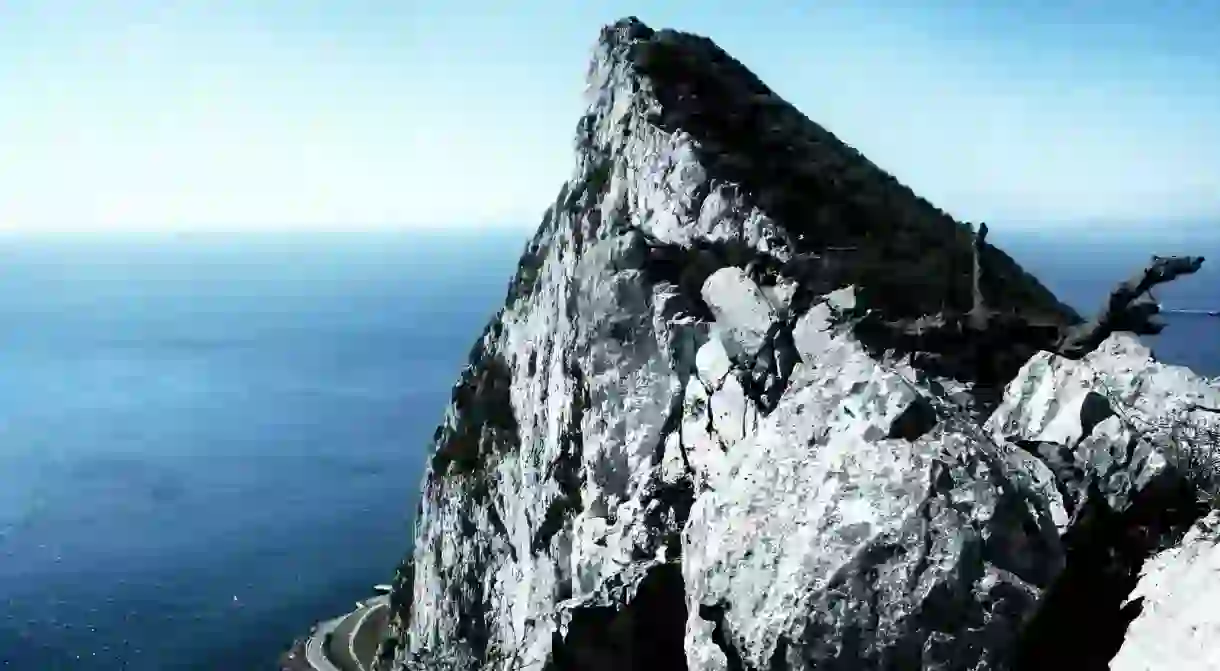The Most Unique Experiences to Have in Gibraltar

Gibraltar’s proximity to Morocco, its location on Spain’s southern tip and its status as a British overseas territory have combined to make it unlike anywhere else you’re likely to visit. From mingling with its Barbery macaques to picking up on the country’s surreal vernacular, here are seven experiences only to be enjoyed in this intriguing destination.
Apes
Gibraltar’s furriest residents are its Barbery macaques – the only wild monkeys to be found in continental Europe. A population of about 230 resides all over the rugged terrain of the territory’s Rock, but most are to be found on its 400 metre peak and give you a friendly welcome when you step off the cable car (although it’s recommended that you keep personal belongings close to you). It’s said that these apes hold to the key to Britain’s control of Gibraltar, and that when they die out the UK will lose its dominion of the territory.
Pillars of Hercules
If you’re approaching Gibraltar by road from Spain on a clear day, you’ll get a great view of the Pillars of Hercules. According to legend, the Rock of Gibraltar was once one with the Jebel Musa – a peak in the Rif mountains of Morocco, 13 miles away across the Straits – before Hercules smashed through them creating the Two Pillars. Seen on the approach, they look like a majestic gateway to the Mediterranean, marking the point at which that sea’s warm waters meet the Atlantic. An even better view of the Musa and the north coast of Africa is available from the viewing platform at Europa Point on Gibraltar’s most southerly tip.

Pick up some Llanito
One of the most bizarre aspects of visiting Gibraltar is overhearing locals talk in the territory’s unique vernacular, Llanito. Llanito reflects Gibraltar’s many-sided history and consists of a mixture of Andalusian Spanish and English peppered with words from several other Mediterranean languages. At first, its rhythm makes you think you’re listening to English; but then you hear Spanish spoken with a strong Andalusian accent, blended with words and expressions from Portugese, Maltese and Italian. The locals all speak English too – and many also Spanish – but encountering this strange language is an experience only available in Gibraltar.
Walk to Spain
Tunnels
Particularly amazing to contemplate as you gaze at the Rock of Gibraltar is the fact that it houses 34 miles of underground tunnels – almost double the length of all its roads put together. Dug for defensive purposes, the earliest of these subterranean pathways date from 1782, during the Great Siege Of Gibraltar, and were used to install guns into the Rock’s vertiginous terrain. The network was extensively enlarged throughout the 20th century, particularly between 1933-38, when four underground reservoirs were built, and the Second World War, when a further 18 miles of tunnels were added to the existing seven. Some of these caverns and pathways are now closed to the public, but the Great Siege and Second World War tunnels make for a truly fascinating visit.
Mix of cultures
Owing to its unique mixture of British, Andalusian and Moorish culture and history, Gibraltar is unlike anywhere else you’re likely to visit. Before being captured by the British in 1704 during the War of Spanish Succession, the strategically-important territory had been swapped between Spaniards and Moors for centuries (its two Moorish periods were between 711-1309 and 1333 and 1462). It’s this many-sided history which accounts for Gibraltar’s unique ambience, its intriguing mix of architectural styles and its Spanish-English-Mediterranean vernacular, Llanito. It’s precisely this blend of influences that can result in some surreal and unforgettable experiences when visiting here.

Views
It’s not often that you can survey three countries and two continents from a single viewpoint, but this is the unique experience afforded by taking the cable car up the Rock of Gibraltar’s 400-metre peak. From here, surrounded by the local Barbery macaques, the old town of Gibraltar is spread out below you to the left whilst Spain stretches away beyond it to the north. Turn around to look south and the coast of Morocco is visible, 13 miles away across the Straits, as is the hazy outline of the Rif mountain range. The influence of all these different countries – Britain, Spain and Morocco – and of Europe and Africa have combined over centuries to give Gibraltar its unique culture.














